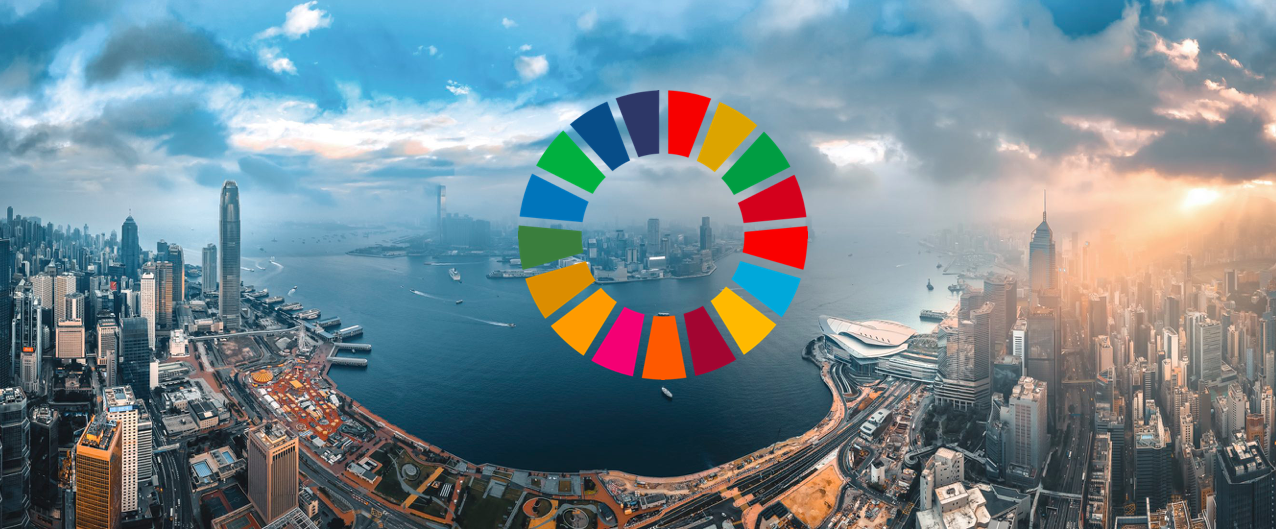What are the 17 Sustainable Development Goals (SDGs)?
The 17 Sustainable Development Goals (SDGs) are humanity's most ambitious plan for a better world: In September 2015, 193 countries agreed on these 17 goals and 169 sub-goals at the United Nations General Assembly. Since the goals are to be achieved by 2030, they are also called the 2030 Agenda.
The SDGs provide worldwide guidance for addressing the global challenges facing the international community. It is about better protecting the natural foundations of life and our planet everywhere and for everyone, and preserving people's opportunities to live in dignity and prosperity across generations. The 17 goals cover all three areas of sustainable development: ecological, economic and social.
Who are the sustainability goals for?
The Sustainable Development Goals (SDGs) are aimed at everyone: policymakers, civil society, business, academia and each and every individual. At the political level, they provide the framework for action to be taken by policymakers, and government delegations report annually on the progress of each goal to the UN High Level Political Forum. But along with the public sector, it is crucial that the private sector and companies are involved in achieving the SDGs.
"The private sector is an indispensable partner for achieving the Sustainable Development Goals. Businesses can contribute as part of their core business. We therefore call on companies around the world to measure the impact of their actions, set ambitious targets and communicate their progress transparently."
– Ban Ki-moon, former Secretary-General of the United Nations

What is the relevance of the SDGs for business?
Different SDGs are directly relevant to different companies and therefore, the first step is to get to know the SDGs with their sub-goals and to understand their importance for sustainable development and their connection to a company's objectives. The SDG Compass published by the Global Compact provides a good guideline for companies on how to integrate SDGs into their business strategy. In our article 'Which SDGs for which Companies,' we show the different SDGs and the industries and companies that are directly relevant to it.
Are companies already contributing to SDGs?
Many entrepreneurs and companies, sometimes without even knowing it, already contribute to sustainable development. They do this, for example, by acting in the following ways:
1) Looking after the well-being and health of their employees (Goal 3)
2) Knowing the conditions under which their supply chains operate (Goals 8, 12)
3) By being aware of measures that reduce their company's carbon footprint (Goal 13).
4) Paying employees fairly and in a gender-neutral way (Goals 5, 8)
5) Allowing employees time to engage in social activities (target depending on type of engagement)
6) Actively supporting the common good in their community (goal depending on type of support)
Every company can participate in shaping an even more sustainable world.

What are the benefits of the SDGs for companies?
The SDGs facilitate the alignment of corporate strategy with the needs of today's society. They highlight areas of innovation and can help to open up new markets. That is why the topic of opportunities is very relevant in the context of the 17 goals. For SMEs that address the SDGs, benefits can include the following:
Recognising tomorrow's opportunities: more and more innovations arise from changes in consumer behaviour (e.g. share economy), but also from increasing pressure from social enterprises that enter the market with innovative, sustainable solutions. This can lead to a further development of business processes or products in terms of sustainability, but also to the development of new types of solutions.
Attractiveness as an employer: Especially for young talents, it is of great interest whether and how a potential employer takes its social responsibility seriously. Companies that are strategically and credibly oriented towards sustainability goals have a better chance of convincing these talents to join them.

New partnerships and synergies: Working together with others on the success of the SDGs is a powerful, unifying element
Positive reputation of the company: Communicating the company's engagement with the SDGs internally and externally – this convinces employees and external stakeholders and turns them into multipliers or advocates.
Further links
There are now numerous sources of information that show companies practical ways in which they can position themselves for the future and make their contribution to achieving the SDGs. In addition, consultancies offer support on how the Sustainable Development Goals can be taken into account in the company or how the existing sustainability strategy can be adapted. Here we link to some very helpful publications, especially for small and medium-sized enterprises:
- Head over to the UN Global Compact website, for resources on how companies can do business responsibly and find opportunities to innovate around sustainability. Our top pick is the UN Global Compact 2018 Toolbox.
- The CEO Guide on Sustainable Development Goals from the SDG Business Hub gives insights on the various actions CEOs from companies can take to align themselves and their business better with the SDGs.
- Visit the SDG Compass from Global Compact, which gives information on how companies can contribute to measure their impact on SDGs.
- Click here for a blog on how 17 companies are contributing to the 17 SDGs and how other companies can learn from these examples.
- Our interview with Vanessa Cox from Preston Associates on the topic of purpose and SDGs also provides an interesting perspective.
- In this article from the mvoplatform, read on how Companies can contribute to the SDGs and how government policies can enhance such contribution.
- Read this paper from Business & Human Rights Resource Centre which covers the why is the contribution of businesses to the SDGs important and why are they important for businesses. It also covers why is it important now.
Header Picture: Lok Yiu Cheung/ unsplash



















